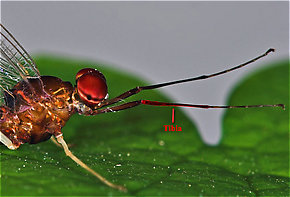Blog & Latest Updates
Fly Fishing Articles
Insects by Common Name


Mayfly Species Drunella cornutella (Small Blue-Winged Olive)
Taxonomic Navigation -?-
Kingdom
Animalia (Animals)
» Phylum
Arthropoda (Arthropods)
» Class
Insecta (Insects)
» Order
Ephemeroptera (Mayflies)
» Genus
Drunella (Blue-Winged Olives)
» Species cornutella (Small Blue-Winged Olive)
Common Names
| Match | Common Name |
| Small Blue-Winged Olive | |
| Blue-Winged Olive |
Drunella cornutella looks like a Mini-Me version of Drunella cornuta. In streams where the two species cohabit, size is the only easy way to tell them apart. Although there is some slight overlap between the largest cornutella and the smallest cornuta, the average difference is usually pretty obvious. Both share very similar coloration and morphology (Morphology: The form and structure of an organism, or the study of the form and structure of organisms.) in all stages, even down to the little curved horns coming out of the frontal shelves of the nymph's heads.
Where & When
Regions: East, Midwest
Time Of Year (?): Late June through August, sometimes into September on cold tailwaters
Preferred Waters: Relatively fast riffles and runs
They usually follow cornuta by about 3-4 weeks, often when water temperatures approach their seasonal peak.Time Of Year (?): Late June through August, sometimes into September on cold tailwaters
Preferred Waters: Relatively fast riffles and runs
Hatching Behavior
Time Of Day (?): Usually early morning, though tailwater timing can differ
Habitat: Similar to cornuta, though not extending as far upstream
Water Temperature: Emergence often commences as temperature approaches about 60-62 degrees.
On freestone streams, emergence often happens in the hour or so after dawn. On tailwaters with cold (hypolimnetic) releases in the summer, emergence can sometimes shift to the evening.Habitat: Similar to cornuta, though not extending as far upstream
Water Temperature: Emergence often commences as temperature approaches about 60-62 degrees.
Spinner Behavior
Time Of Day: Evenings
Habitat: Riffled areas
Like cornuta, the spinners are usually not very important. On larger, warmer freestones, the spinner fall is a dusk-into-dark affair, and fish may not feed until the water cools. On tailwaters, the spinners may compete with larger or more numerous species.Habitat: Riffled areas
Juvenile Biology
Current Speed: Fast to moderate
Substrate: Rocks and gravel
The nymphs are virtually identical to Drunella cornuta, but smaller (6-8 mm at maturity). Slight differences in tibia (Substrate: Rocks and gravel

The tibia of this Isonychia bicolor mayfly spinner is highlighted in red.
Drunella cornutella Fly Fishing Tips
Larger "BWO" imitations used for Drunella cornuta need only be downsized, or "BWO" imitations used for Baetidae can upsized. Nymph imitations fish well during the period before or around emergence, even when opportunities to fish duns or spinners are slight.
Your Thoughts On Drunella cornutella:
Top 10 Fly Hatches
Top Gift Shop Designs
Eat mayflies.
Top Insect Specimens
Miscellaneous Sites
Troutnut.com is copyright © 2004-2024 Jason
Neuswanger (email Jason). See my FAQ for information about use of my images.
 privacy policy
privacy policy
